- News
- Reviews
- Bikes
- Components
- Bar tape & grips
- Bottom brackets
- Brake & gear cables
- Brake & STI levers
- Brake pads & spares
- Brakes
- Cassettes & freewheels
- Chains
- Chainsets & chainrings
- Derailleurs - front
- Derailleurs - rear
- Forks
- Gear levers & shifters
- Groupsets
- Handlebars & extensions
- Headsets
- Hubs
- Inner tubes
- Pedals
- Quick releases & skewers
- Saddles
- Seatposts
- Stems
- Wheels
- Tyres
- Tubeless valves
- Accessories
- Accessories - misc
- Computer mounts
- Bags
- Bar ends
- Bike bags & cases
- Bottle cages
- Bottles
- Cameras
- Car racks
- Child seats
- Computers
- Glasses
- GPS units
- Helmets
- Lights - front
- Lights - rear
- Lights - sets
- Locks
- Mirrors
- Mudguards
- Racks
- Pumps & CO2 inflators
- Puncture kits
- Reflectives
- Smart watches
- Stands and racks
- Trailers
- Clothing
- Health, fitness and nutrition
- Tools and workshop
- Miscellaneous
- Buyers Guides
- Features
- Forum
- Recommends
- Podcast
feature
 7 reasons why you should get electronic shifting May 2022
7 reasons why you should get electronic shifting May 20227 reasons why you should get electronic shifting
Shimano, Campagnolo and SRAM have all offered electronic shifting for several years, FSA has joined them, and SRAM has updated its eTap system to 12-speed and launched a less expensive Force eTap. With complete electronic-shift bikes costing from around £2,400, should you be thinking about making the move?
Let's take a look at the advantages.
Check out our Shimano Dura-Ace R9150 Di2 review here
Improved shifts
How much more precise than mechanical shifts can electronic shifts be? Well, with a mechanical system, if you push the lever to move from one chainring to the other the front mech performs the same every time. With an electronic system the front mech acts slightly differently depending on the sprocket you’re in at the time.
Take SRAM’s eTap system. When you move from the small chainring to the big chainring, the cage overshifts slightly to help the chain make the jump. Then a fraction of a second later, once the chain is up there, the cage moves back inboard to its standard position.
When you’re shifting from the big chainring to the small chainring, the cage moves inboard in two stages. First, it shifts just enough to move the chain down. Then a fraction of a second later, once the chain is down on the inner ring, it moves a little further across. Doing things this way avoids the possibility of the chain coming off the inside of the small chainring.
The extent to which these two things happen depends on the sprocket that you’re in at the time. Say you have the chain on the small chainring and one of the larger sprockets and you want to change to the large chainring. The rear mech lets the front mech know that it needs to overshift more than it would if the chain was further outboard on one of the smaller sprockets.
The bottom line is that you get excellent shifting even under load.
Read our SRAM Force eTap AXS Wide groupset review
"Dura-Ace or Ultegra Di2 electronic gear shifting moves the chain exactly where it needs to be through a programmed front or rear derailleur position," says Shimano.
"The science behind it is truly incredible and also programmable to your specific shifting preference [see below]. You make a command and the system responds accurately every time. In a race situation the reliability and the confidence it inspires can mean the difference between making a break or not."
Quicker shifting
If you want to shift right across the cassette with a mechanical shift system, you need to press the lever more than once (different systems require different numbers of presses). With electronic systems you can shift from one side of the cassette to the other when you press and hold the lever in. It’s just a little bit easier.
Campagnolo claims that, “[EPS rear derailleur] shift times are now 25% faster that than the mechanical rear derailleur (taking just 0.352 seconds to swap sprockets)”.
Check out our reviews of Shimano Ultegra Di2.
You can customise the shifting
With Shimano Di2 and SRAM AXS eTap you can customise the shifting speed and the number of gears the system will shift when you press and hold the lever. You can also swap the functions of the upshift lever and the downshift lever, and even the functions of the left lever and the right lever. SRAM's first Red eTap system didn't have the ability to customise the shifting, but the two new AXS 12-speed groups can be customised via a smartphone app.
Campagnolo's MyCampy app allows you to customise shifter function in an EPS system.
No chain rub
Once a Shimano Di2 or Campagnolo EPS system is set up correctly, no matter what sprocket you are in you never need to adjust the position of the front mech to prevent the chain rubbing on the front mech’s side plates because it is done automatically.
After you shift the rear derailleur you’ll sometimes hear a whirr as the front mech moves slightly to take account of the chain’s new position, the idea being to improve efficiency and reduce wear.
SRAM says this isn’t necessary with its eTap system because there’s no danger of chainrub no matter which chainring/sprocket combo you’re using.
Read our SRAM Red eTap First Ride.
Simple operation
Changing gear with an electronic system requires a far shorter lever movement than with the mechanical equivalents. You’re really just pressing a button, never needing to sweep a lever across.
Moving the levers on a mechanical system is hardly the trickiest operation in the world, but it can be a bit of a reach if you want to shift across the entire range available to you. Things are just a little simpler with electronic systems.
With SRAM’s eTap system the lever on one shifter performs upshifts, the lever on the other shifter performs downshifts, and you push them both at the same time to shift between chainrings. It’s a really simple system to use, even if you’re wearing big gloves or mittens in cold weather.
Multiple shift position options
On a road bike with Shimano or SRAM electronic shifting you usually change gear via the combined brake and gear shifters, a lot like you would with a mechanical system, but you can add satellite shifters elsewhere on your handlebar to make it slightly easier to change gear in certain situations, especially when racing.

Shimano offers its Climbing Shifter that you can fix to the top section of your handlebar.
It also has a Sprinter Shifter that you can fit to the drops.
SRAM’s eTap system has satellite shifters called Blips that you can position anywhere on the handlebar, and now there's a wireless version too.
You can change gear on a time trial bike while out of the saddle
If you’re riding a time trial/triathlon bike with mechanical shifting, the shift levers will be positioned at the front of the aero extensions where they’re easy to access when you’re in your aero position. That means you can’t change gear when you’re riding out of the saddle with your hands on the base bar.

With an electronic system, you can have shifters on the aero extensions and on the base bar, so it’s easy to change gear if you’re out of the saddle when climbing or coming out of a tight corner.
Read our Campagnolo EPS First Ride from way back when it was first launched.
There’s minimal maintenance
With an electronic system there’s very little routine maintenance and you’ll never need to replace a cable. Little, if any, tuning is required after the initial set-up.
Even that initial setup is very easy with SRAM’s eTap system. It’s wireless so there’s no need to route cables through your frame.
Mechanical shifting has been working fine for many, many years and it will continue to do so, and it’s considerably cheaper than an electronic setup. If you don’t find the benefits we’ve listed above compelling enough to convince you to change to electronic, no component manufacturer is going to stop offering mechanical shifting any time soon.
One of the most frequent objections to going electronic is the possibility of running out of charge mid-ride. That’s unlikely to happen unless you really don’t concentrate. You’ll get hundreds of miles between charges on every electronic shift system, and plenty of warning that you’re low on juice.
Even if the battery does go flat, you can manually put the chain into the gear you want and ride home singlespeed.
Of course, you don’t need to make the switch to electronic shifting.
"You can also get precise, fast and accurate shifting from Dura-Ace, Ultegra or 105 mechanical gears," says Shimano. "In this sense, as well as making a command – ie pushing the lever – you also operate the system by pulling or releasing a cable.
"There's a certain art to setting up your drivetrain manually to get this level of efficiency. A lot of riders prefer to know how to operate every individual component within their drivetrain, which is easier with a mechanical system.
"With each type of shifting having its merits, the question is whether you want to command your drive train through the push of a button, or to physically operate it using a lever. Perhaps the answer is to have both depending on the particulars of your ride."
Most people we know who have tried electronic shifting for a significant period of time want to stick with it, but the choice is yours.
Mat has been in cycling media since 1996, on titles including BikeRadar, Total Bike, Total Mountain Bike, What Mountain Bike and Mountain Biking UK, and he has been editor of 220 Triathlon and Cycling Plus. Mat has been road.cc technical editor for over a decade, testing bikes, fettling the latest kit, and trying out the most up-to-the-minute clothing. He has won his category in Ironman UK 70.3 and finished on the podium in both marathons he has run. Mat is a Cambridge graduate who did a post-grad in magazine journalism, and he is a winner of the Cycling Media Award for Specialist Online Writer. Now over 50, he's riding road and gravel bikes most days for fun and fitness rather than training for competitions.
Latest Comments
- wtjs 49 sec ago
Over 10 years ago my daughter bought a Carrera alloy road bike when she went to Uni. It served her very well. Several years later, while renovating...
- chrisonabike 11 min 56 sec ago
Currently drivers are already fitted with a remote-sensing system called "eyes" but it turns out that despite several hundred million years of...
- chrisonabike 10 min 43 sec ago
I haven't cycled in Livingston (sorry) for a couple of years now, but I remembered it as a place with an extensive network of footpaths you could...
- Rendel Harris 44 min 15 sec ago
I would love to see him do it but I have my doubts; the reason he could ride away from MVdP et al yesterday was because he had softened them up...
- Rendel Harris 50 min 11 sec ago
Thanks Steve, that's useful to know, I shall try it next week with Roubaix and hope that they don't switch to advertisements just as Pogacar puts...
- CmdrBiggles 1 hour 52 min ago
Nice they are out of the box (28-622) and easy to fit, but my first puncture, in the centreline of the tread, occurred at 133km, and it was none of...
- kcr 7 hours 15 min ago
I'd say it is an extremely rare condition for most cyclists or runners.
- ErnieC 10 hours 41 sec ago
or Team Bahrain ... selective outrage.
- newbankgyratory 11 hours 3 min ago
This website offers suitable data: https://www.automobiledimension.com/large-suv-4x4-cars.php
- newbankgyratory 11 hours 35 min ago
Perhaps park the goods in a US Customs Bonded warehouse and then import them out of there when the tariff nonsense settles down?...
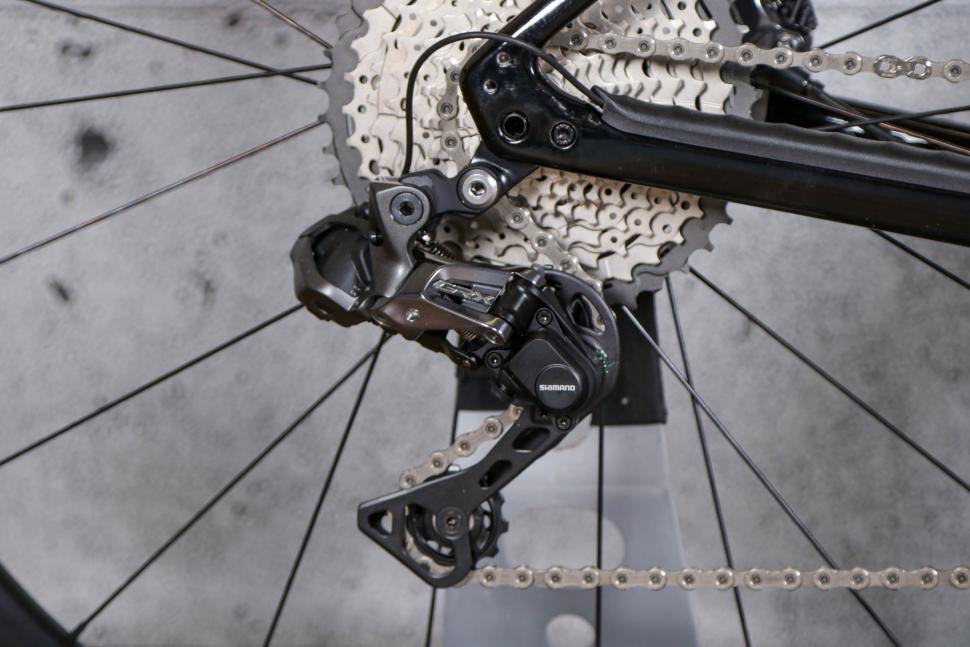
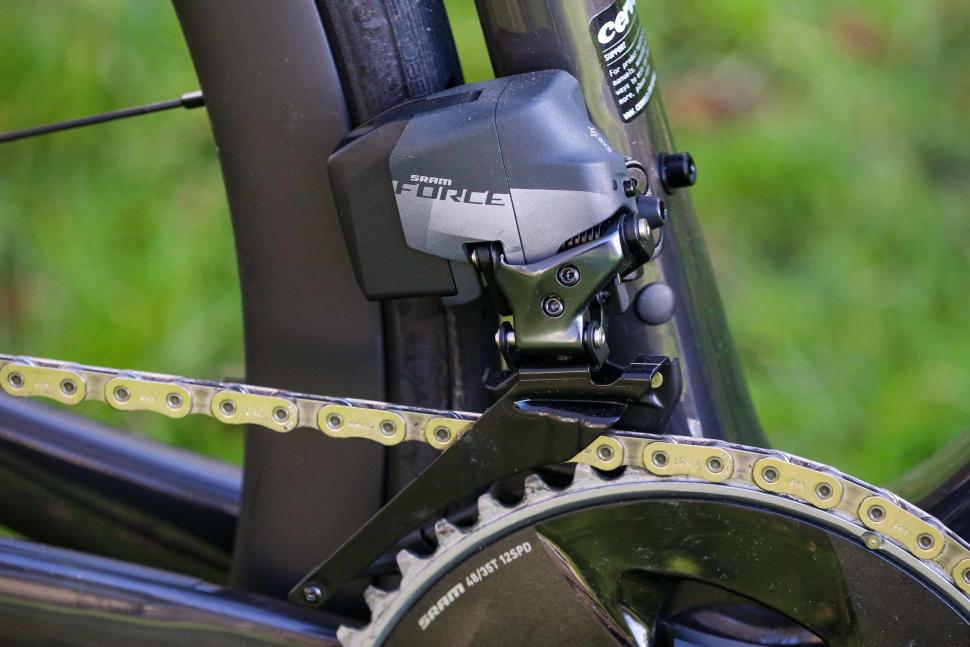

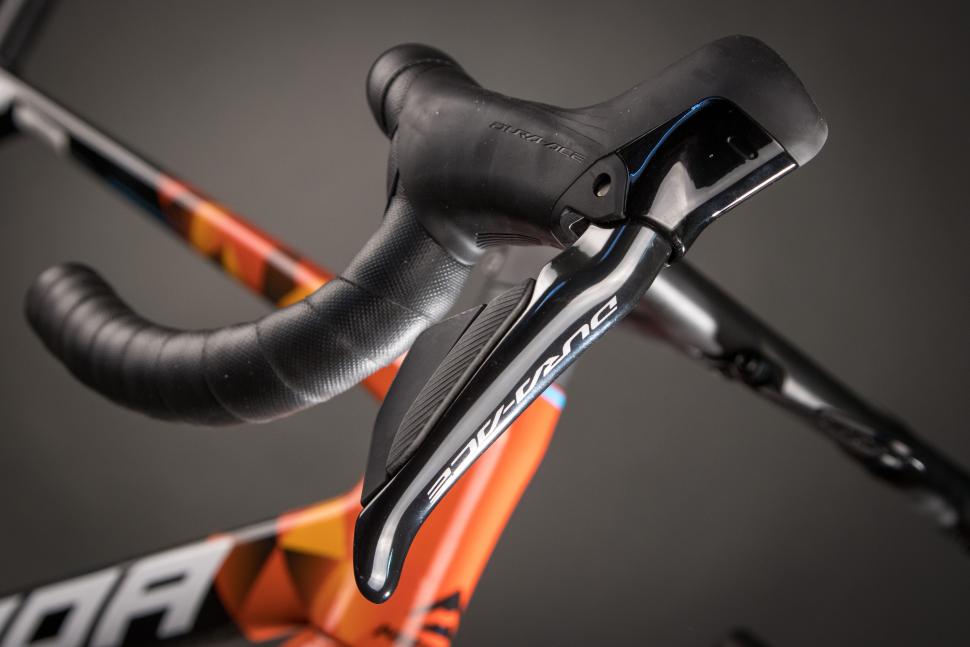

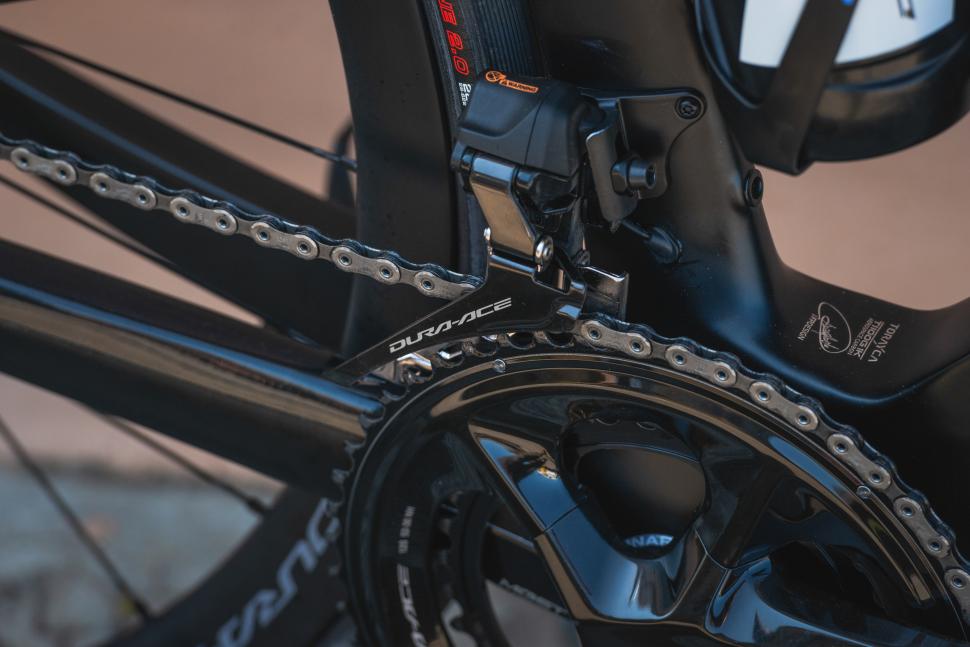
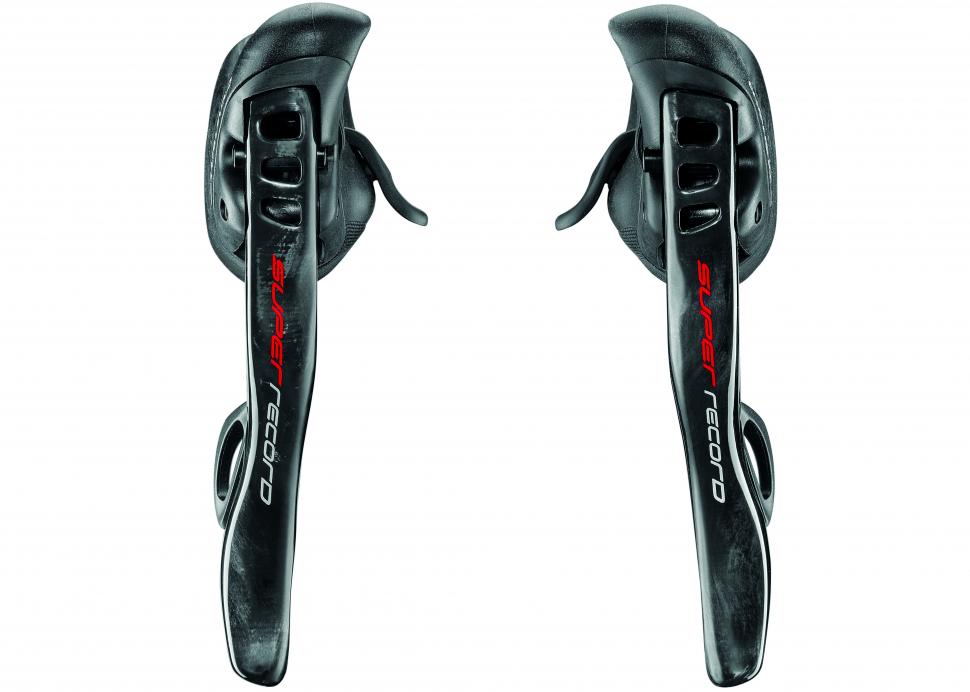

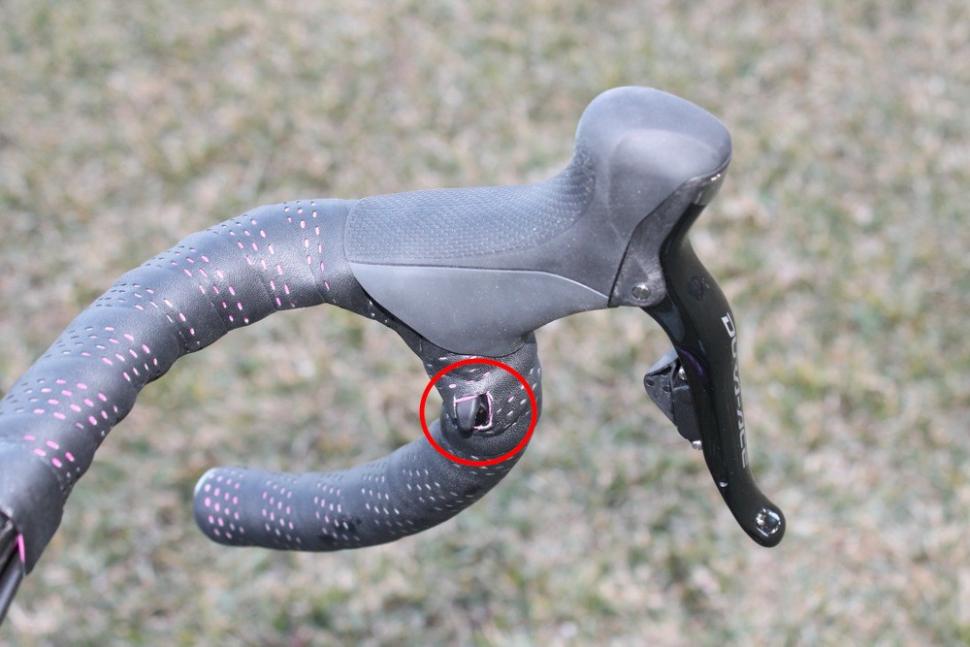
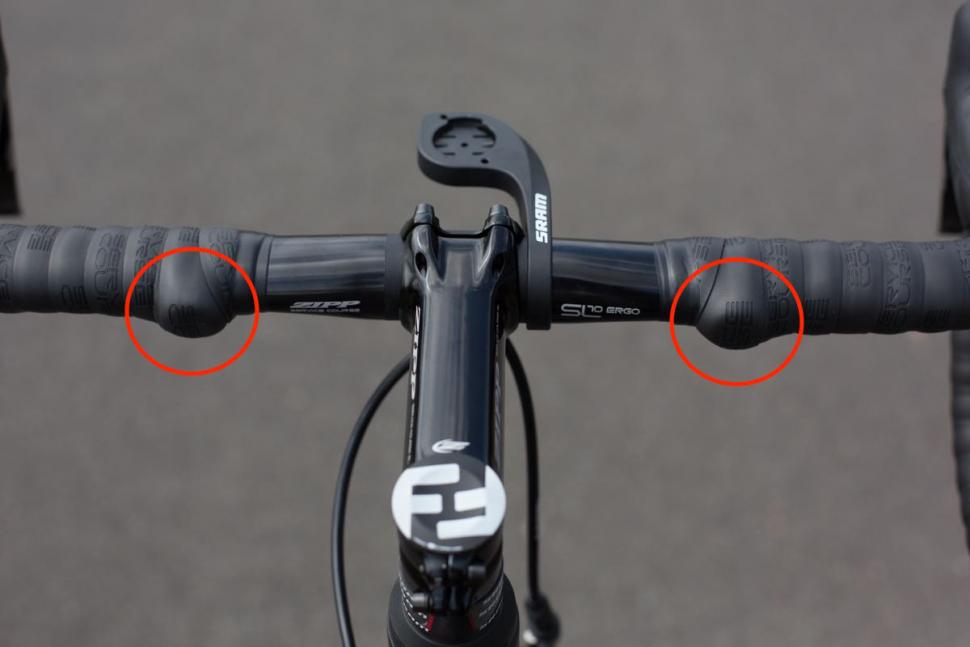

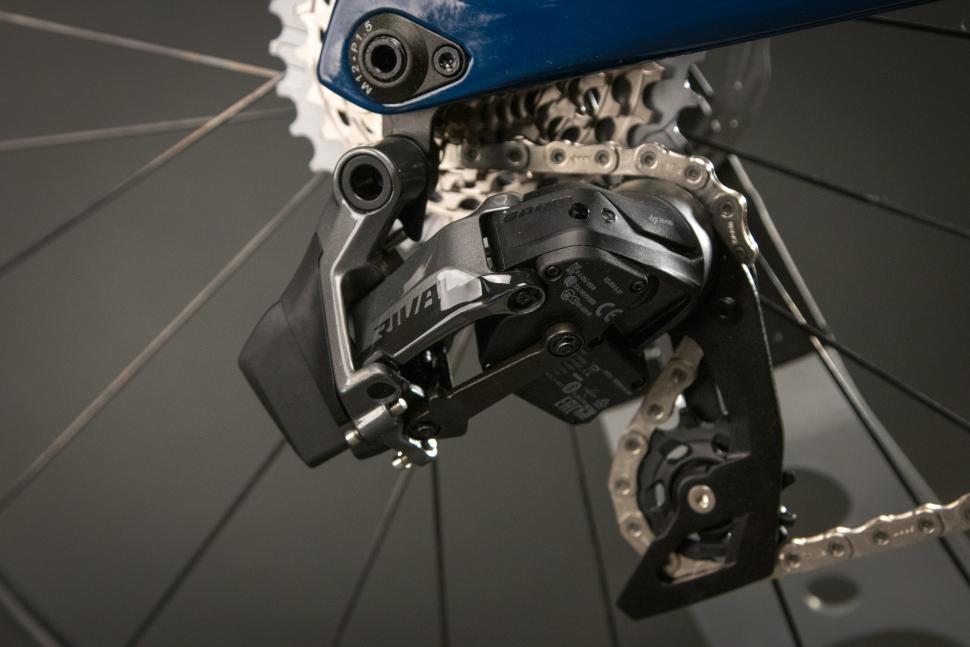
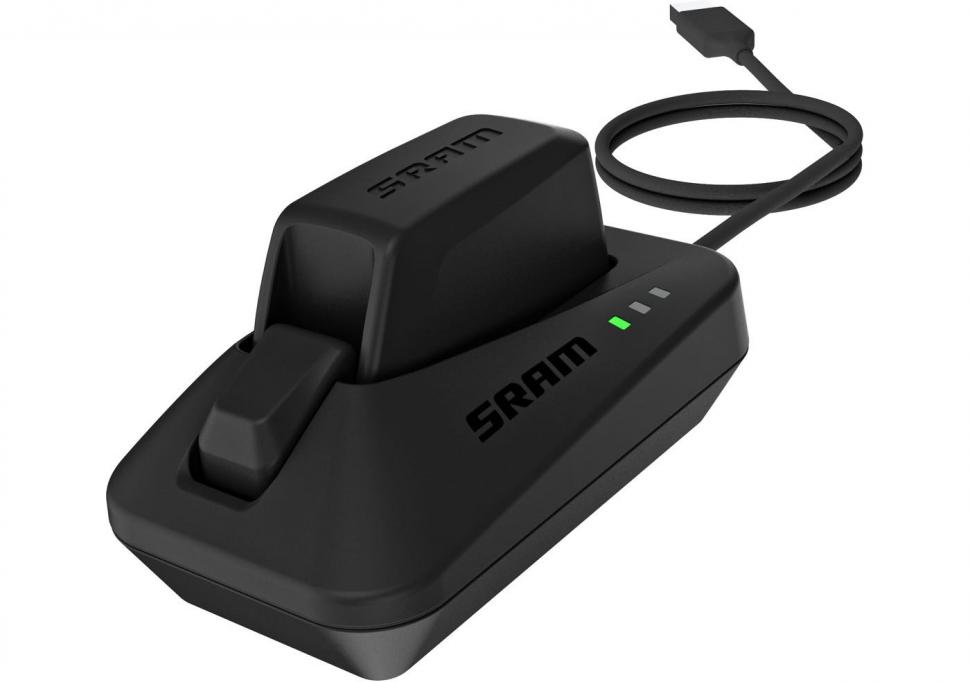
Add new comment
129 comments
You can't much more obviously advertorial than this! I admit that my Sora 9-speed shifting was becoming a little hesitant after almost 2 1/2 years with no maintenance other than scraping off the grime and mud, and replacing the 2 inners. Even I was amazed how good shifting became after I just pulled off the outers over the inners (as far as the inline adjusters) and replaced them with new generic outers filled with oil. This doesn't take long because they're in one piece and held on frame flanges with zip-ties- you just cut to the same length, file the ends, thread the new outers through the ties and you're done. I should have done it after 18 months. Therefore, similarly minded-cheapskates on bikes with one-piece outers and inline-adjusters, forget electronic!
I've got two bikes with Di2, and recently resurrected an old 2011 Felt F5, as a "daily beater". External cabling, rim brakes, basic tyre clearance, alloy wheels. It's resolutely old school, and it's got a mechanical groupset. It's the same weight as the other bikes (both of which cost significantly more) it's equally as fast, but the biggest revelation for me has been that every single time I change gear, it puts a massive smile on my face. I like having Di2, and agree with every one of the advantages listed in this article, but a properly maintained, well functioning mechanical groupset is a thing of real beauty. There's something magical about it.
Reason 8 - If you have limited strength in your fingers due to arthritis or similar.
I'm in the same boat as others that ask why! The cost alone is enough to turn me off, not to mention when something goes wrong the cost to repair will be; plus technical issues can be difficult to diagnose and repair, some shops just give up and tell you that you need a new derailleur. I also don't want to be reliant on batteries to make the bike operate, we talk about going green yet we don't care if we use lithium batteries that are stripped mined and raping African countries of the landscape just so us westerners can pat ourselves on the back for having the latest greatest technology while not caring what is going on to get that technology; we don't care if we have to use electricity to charge those batteries adding to the climate change problem. Those batteries only last an average of 3 years, which then will cost around $80 to replace, that's a lot of expensive maintenance on a bike that is unnecessary.
No thank you!
My battery on a bike that is often ridden 200 miles a week still seem to have the same life as new... 5 years ago.
Di2 seems to be very reliable. About the only issue I have seen is the front mech "failing" which turns out to be a flat battery and it starts working. Occasionally you get detached cables due to a knock (often poor fitting in the first place). The only trouble I've had so far is worn out jockey wheels - which is not an additional expense for Di2, and gear alignment problems, which turned out to be the freehub coming loose, again not Di2. I've lost count of the number of riders who have had to abandon rides due to failed gear cables in the same time I've had my Di2.
My general point is that people find cable gears far more difficult to diagnose and repair than Di2.
I've had a couple of Di2 batteries break, although one of them might have been my fault as I'd trapped and damaged the cable when fettling with my handlebars.
I knew you loved bikes but.......
Don't kink-shame me
I used to race, have been riding for over 40 years, and now I do touring, and in all that time I've only known one person who had a cable failure on a ride, so I don't know where you got all that from, other than your imagination! Even in the TDF they don't have cable failures, in fact they have been experiencing more problems with Di2 than they did with cables.
Electronic shifting does allow a rider to now shift through multiple gears whereas the newer index mechanicals you cannot...EXCEPT, back in the day of friction shifting, and lever action index shifting you could shift through multiple gears, that only stopped when they decided to put the shifter in the brake lever; so really shifting through multiple gears is not a new thing exclusive to electronic shifting.
I too have been riding regularly, a few times a week, for well over 40 years, nearer to 50 now, including some racing, solo, with friends, and in clubs, must have done going on for a million miles I would have thought, and have had the same experience as Froze. Gear cable failures are extremely rare in my experience. I remember one a mate had about 15 years ago, it turned out to be just a loose anchor bolt, diagnosed and fixed in about 5 minutes. I don't remember any others. As a bike shop owner, with customer repairs, as I remember, gear cables would fail usually when they were many years old, never lubricated, probably even left outdoors in all weathers, so would either seize in the outer or rust badly and break, near the nipple. Not something that happens with 'proper cyclists' who maintain their bikes. So how on earth is someone able to say 'I've lost count of the number of riders who have had to abandon rides due to failed gear cables in the same time as I've had my Di2'?? How long is that, 4-5 years? 'Lost count'? Riders having to abandon rides for any kind of non-repairable issue is rare enough, let alone this one isssue. Just saying...
Well, despite your 50 years riding experience and your somewhat snooty attitude to "proper cyclists" who maintain their bikes, in my experience, the issue of cable breakage specifically to Shimano 10 & 11 speed road shifters is fairly prevalent. On one occasion mid ride, I was able to get back home on the smallest cog on the cassette, on another occasion I caught it in time once the gear change started to feel a bit baggy. In these scenarios, the cable frays and eventually snaps inside the shifter itself.
Photo shows a frayed cable on a bike that had done less than 4000km from new and I would consider to be well maintained.
So my own lived experience in the last 7 years of running Di2:
Di2 failures: 0
Cable failures: 2
To add another data point, I've also had a Shimano 10-speed gear cable fray and snap in the brifter. I'd estimate the inner cable was about 18 months old when it broke.
I agree the stuff is not cheap but I've had my eps system 6 years and it has never needed adjusting, the battery has never run out and whole setup has always been a pleasure to use. Not the least bit of bother.
I think before you complain about lithium batteries to operate derailleurs you should campaign against the vast machine tool industry and their lithium battery based products. Another product line being transferred to lithium batteries that we really don't need are vacuum cleaners. Electric derailleurs pales into insignificance compared to that lot.
I agree with what you say about the machine tool and vacuum cleaner industries, but we are not discussing them here, it's a cycling site and we happen to be talking about electric derailleurs. Froze might well be objecting to the issues you mention, or would be if this were a relevant site. Also, the fact that the tool and vacuum industries are worse doesn't make the smaller electric industries all ok. What Froze says is pertinent.
It's not that we should use, run electronic shifters, it's the ruddy exorbitant sky high prices thatare demanded for electronic shifting. Bring the end costs down dramatically and more would be able to afford threat up.
As it stands at present, their costs are Looney Tunes.
It's not that we should use, run electronic shifters, it's the ruddy exorbitant sky high prices that are demanded for electronic shifting. Bring the end costs down dramatically and more would be able to afford threat up.
As it stands at present, their costs are Looney Tunes.
It's not that we should use, run electronic shifters, it's the ruddy exorbitant sky high prices that are demanded for electronic shifting. Bring the end costs down dramatically and more would be able to afford threat up.
As it stands at present, their costs are Looney Tunes.
It's not that we should use, run electronic shifters, it's the ruddy exorbitant sky high prices that are demanded for electronic shifting. Bring the end costs down dramatically and more would be able to afford threat up.
As it stands at present, their costs are Looney Tunes.
I'm a Campag EPS user. I love EPS, it just works, and it's fun to use. Entry cost was a bit more than mid-range mechanical but I took advantage of sales, ebay, s/h etc. My EPS kit has been very reliable, it's been drenched with rain on a few occasions to no ill-effect. The mechs are solidly built, the cables are well sealed, the shifting is impeccable. I can see why people would wish the parts to be cheaper but they are really well made.
Went from two years with Di2 back to mech. One too many failures on Di2 that required ridiculously expensive diagnosing, servicing and parts and the bike off the road for a week at a time... none of which is possible if you're anywhere away from a big city when abroad. If a mech cable breaks I take out the cranks, thread a new wire through and I'm back on the road in 20mins. The Dura Ace 9100 mechanical is so damn good, I don't miss it one bit. I won't be going back to Di2 on my main bike unless I'm racing.
No chain rub no matter what! I'm sold?
How much, need to be cheaper for me to convert.
Also, won't the front mech be obsolete soon!?
How are people finding etap from a reliability point of view?
I'm looking at building up a new bike and I really fancy trying etap on it but don’t fancy getting something that’s likely to let me down either miles away from home or on an early morning commute!
I don't see the benefits. No chain rub? Just last week I didn't need a front mech.
I read road.cc every week and I'm on my third groupset this year from following their recommendations.
I just like the little 'whirrr' sound it makes.. makes me think of Transformers.... Autobots, change gear!
I’m sure all the new upto date bike tech is an improvement, however it’s a personal choice. Each to his/her own. If you area racer then fine. If you are a top racer then you don’t have to buy any of it as bikes are provided by your team.
It keeps the bike industry going forward. They have to make profits and what better way is there to sell sophisticated tech at high prices and large profit margins to Joe public. Just my take on all of this.
I’m sure all the new upto date bike tech is an improvement, however it’s a personal choice. Each to his/her own. If you area racer then fine. If you are a top racer then you don’t have to buy any of it as bikes are provided by your team.
It keeps the bike industry going forward. They have to make profits and what better way is there to sell sophisticated tech at high prices and large profit margins to Joe public. Just my take on all of this.
I'm definitely in the "once you go Di2 you never go back" camp for so many reasons, ease of use, no cable stretch (riding bike for 2 years - NO adjustments ever ahd to be made), battery life now is superb (3 charges in 2 years at 10k km per year). However, I'm lucky enough to be able to afford a Di2 bike but as with most tech the cost will come down, electronic shifting will eventually be on lower spec bikes.
I've just moved from Di2 back to mechanical, basically becuase i didn't trust the electronic system. i worried that if i transported my bike to an event that i'd get there & the battery could have drained in the back of the car, or been damaged on the bike rack, so i stopped using the bike.
I also couldn't really tell much difference and not think the Di2 version is a bit of a gimic to get the unwary to upgrade & spend more money.
Would like to try the wireless version though, but i maight wait a bit for it to settle down & reduce in price.
This is all well and good until it goes wrong and you get stuck in 11t and can't shift any more. Not all of us have the legs of Rigoberto Uran!
I did like the 'less maintenance' point in the article lol - yeah that's because none of us can tinker with these systems to fix them when they go wrong
Di2 could definitely do with a manual override for when the system breaks/runs out of juice.
I managed to trash my Di2 by trapping the left shifter cable in the stem clamp and tightening up before noticing. For some reason (short circuit?) it appeared to damage the battery, so after I'd replaced the squished cable, the battery wasn't able to keep charge for more than 2 days. Obviously, the first time that I noticed this was on a Monday morning when the whole system was completely dead, so I had to get around on my newly converted single speed.
Pages